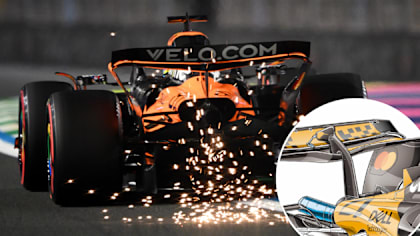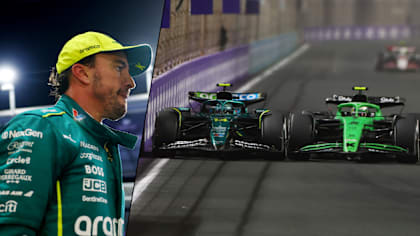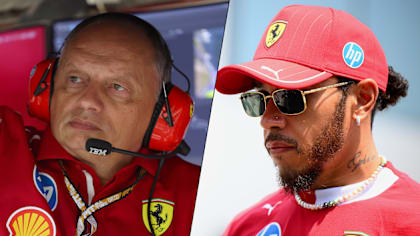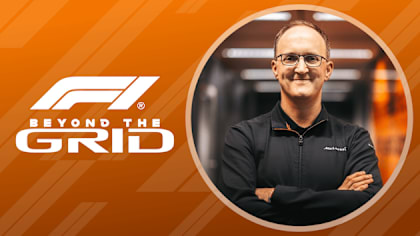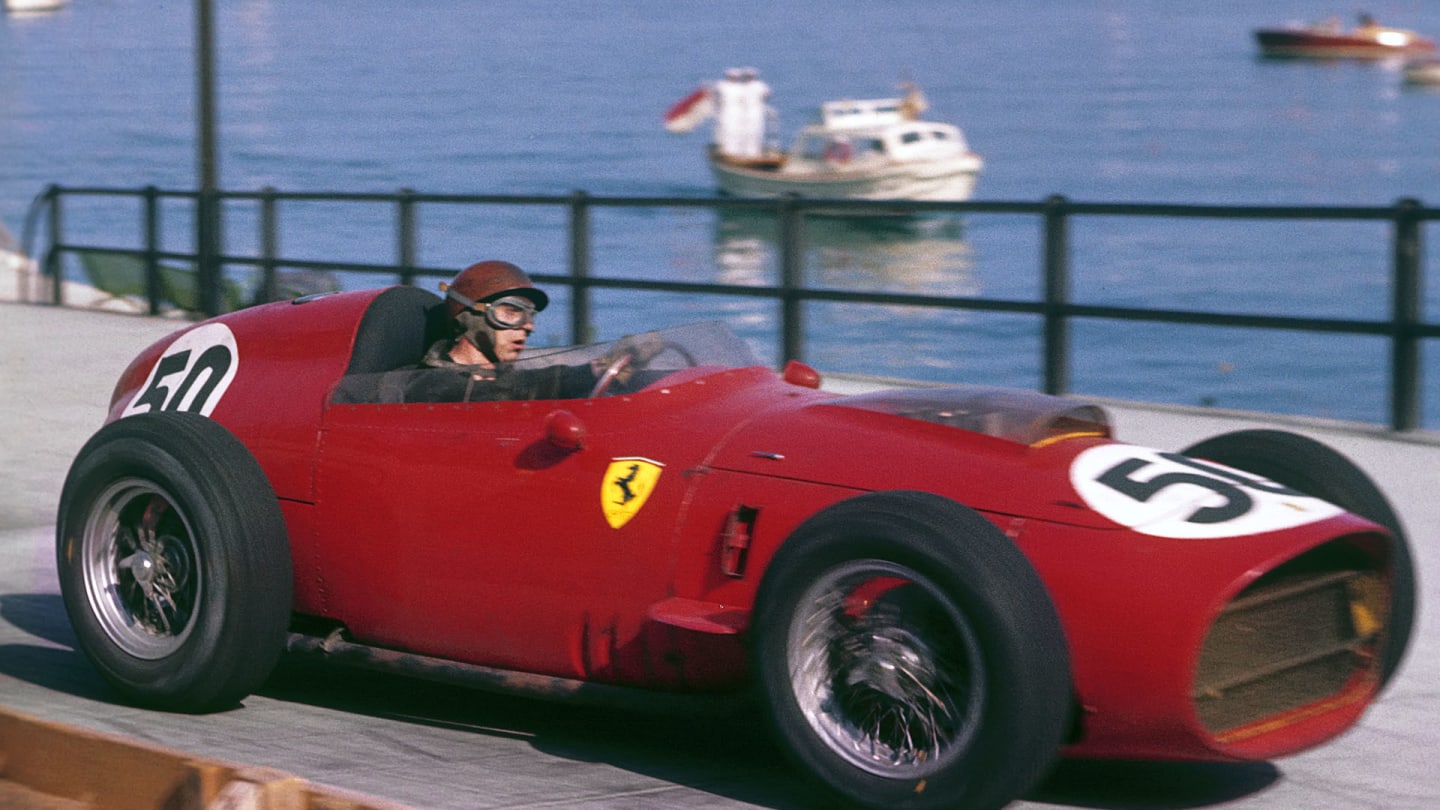
Feature
OBITUARY: Tony Brooks, Formula 1’s Racing Dentist, remembered
Share

His was a story that began in fairytale style, but which later saw him contractually obliged to play second fiddle to the legendary Stirling Moss when they were winning races together at Vanwall.
But Charles Anthony Standish Brooks – better known as Tony – the last of the Fifties Grand Prix winners who has died at the age of 90, was embarrassed by the former and much more comfortable with the latter. An innately quiet, fundamentally self-effacing gentleman, he much preferred to get on with the job of driving Grand Prix cars at astonishing speeds with an economy and artistic precision that was beautiful to behold, than to become enmeshed in the trappings of fame.
READ MORE: Legendary 1950s F1 racer Tony Brooks passes away, aged 90
The fairytale came in 1955 when, as a dental student from Dukinfield who dabbled in motor racing, he went out to the non-championship Syracuse Grand Prix as a tyro, and came back a star after beating established Italian teams with his little Connaught, to become the first British driver since Sir Henry Segrave more than 30 years earlier to win a Grand Prix in a British car. Astonishingly, he had only previously driven a Formula 2 Connaught in a handful of national events, and spent most of his spare time in Sicily with his nose buried in his dentistry books.
“I was totally absorbed in studying when Connaught called me, and I was still immersed all the way out there,” he revealed. “It was probably a blessing, because I didn’t have time to think what I was doing, going to what was regarded as the end of the world to drive a car I’d never sat in, on a circuit I’d never seen – a true road circuit! Thankfully I was more worried about my studies.”
Rather than filling his head with dreams, he was the sort who focused on reality without the distractions of imagery. And even as British motorsport hailed a new star, he went straight back to his studies – because once you committed to something, you had to see it through.
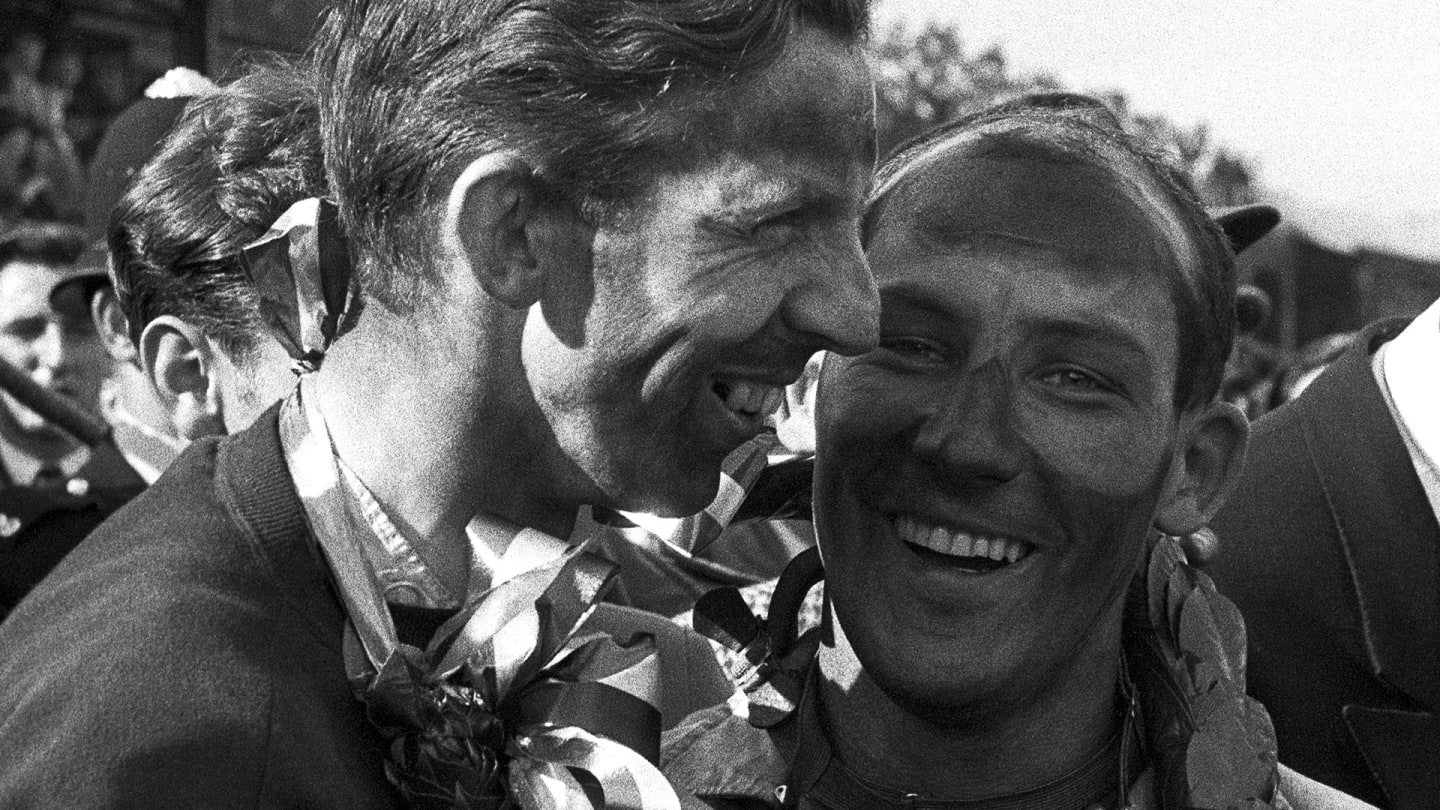
Brooks celebrates his 1957 Aintree win, which he shared with Stirling Moss
He did not fit the mould of the Fifties, the era of cavalier young men such as Mike Hawthorn, Peter Collins, Eugenio Castellotti, Luigi Musso and Harry Schell, colourful but doomed swashbucklers who danced on the edge of risk as if unconsciously aware how short their lives were destined to be. Never one to voluntarily risk, let alone relinquish, control, he was more of a prototype for today’s technocratic generation, especially as he had an unfashionable understanding of, and sensitivity for, his cars’ technicalities.
After a barren year with perilously fragile BRMs in 1956, he joined Stirling Moss in Tony Vandervell’s Vanwall team for 1957. He finished second in Monaco, then when Stirling took over his car in the British GP at Aintree, they became the first Britons in a British machine to win a pukka World Championship GP.
LISTEN: Fifties hero Tony Brooks on racing Fangio and Moss in F1's first decade
The following year, despite often having to surrender his chassis, engine or gearbox after practice to Stirling who, as number one, had first choice of equipment, he matched the maestro’s tally of three victories for Vandervell; fittingly they came at Spa-Francorchamps, Nurburgring and Monza, the three fastest and most demanding tracks on the calendar. By irony, neither of them won the title that year as reliability favoured Hawthorn, yet while Moss remained a household name, Brooks was very happy to remain a reluctant hero to whom publicity meant nothing.
“I think we did feel different from the others,” he said. “I did, because motor racing was too serious to fool about. I felt that you had to be totally fit and totally focused on what you were doing. But I didn’t have Stirling’s problem. He was the antithesis of Mike, in that he would be to bed early the night before the race and wouldn’t be supping pints with the lads in the pub, but he was often criticised, despite being a totally committed professional behind the wheel, for maximising his publicity and marketing. But why not? I think behind the wheel I was just as committed and professional. You were putting your life on the line anyway, and not to be professional behind the wheel was loading the dice against you.
“But I like to think I could enjoy myself with the lads after or between races along with the best of them, though I was certainly a different character to Mike! Away from racing, I was finishing my studies and had this idea that I would qualify as a dentist, so I was really a dentist, not a professional racing driver. I think I probably felt that all my career.”
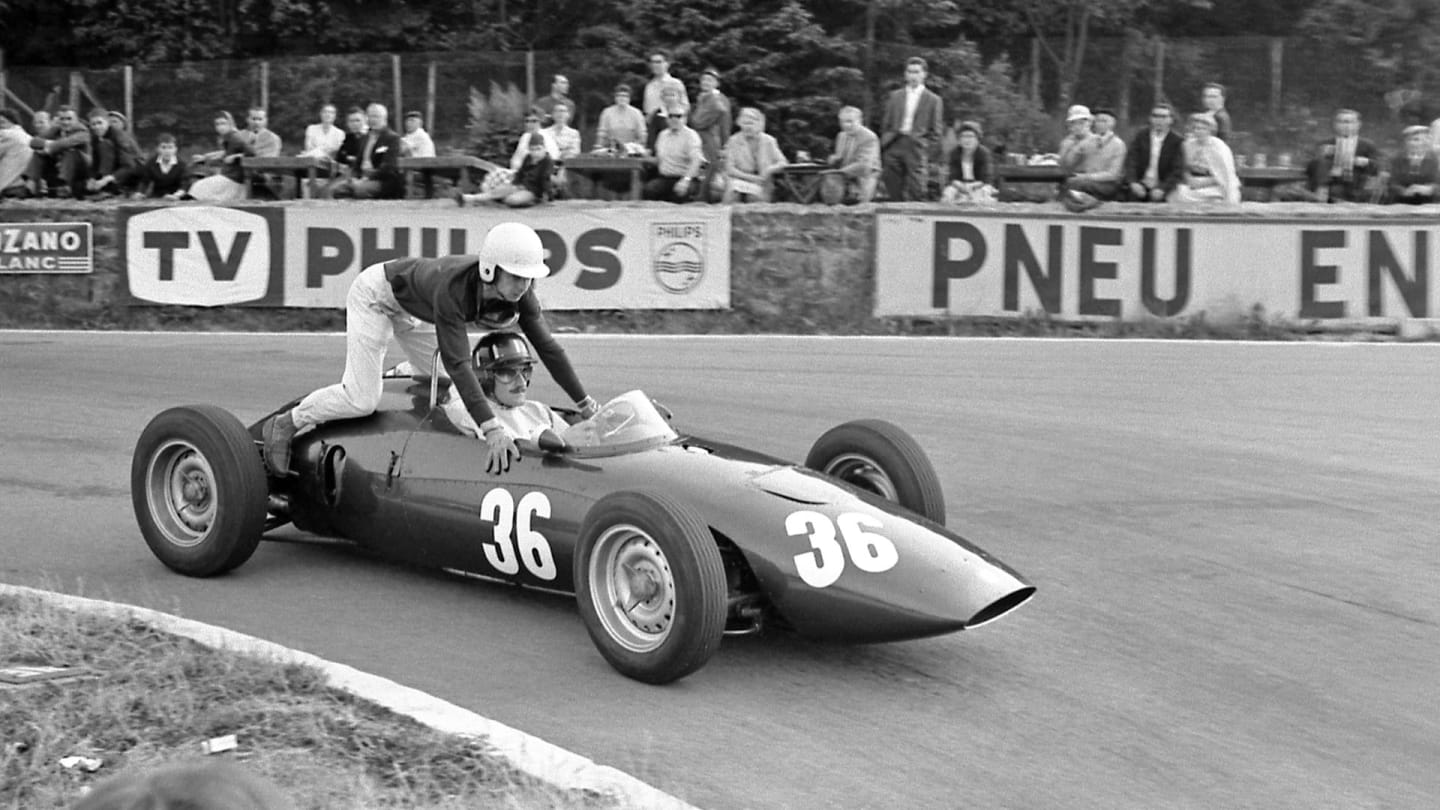
Hitching a ride with Graham Hill at Spa in 1961
His perception of himself was illuminating. “I think, quite simply, that I was very fortunate. I was blessed with natural ability, and I found that driving to the limit of that was good enough. Obviously Syracuse was a fairytale story and gave me tremendous satisfaction. But the walls didn’t make any difference to me. Walls, Silverstone barrels, they were the same thing in my mind. In most people’s books it was a frightening circuit. Sicilian roads weren’t great then. But it didn’t concern me.”
His style was economical not just in terms of inputs, but philosophy. “I just did what came naturally, really,” he would say with characteristic diffidence. He didn’t understand why even some of the great drivers professed to hate Spa or the old Nurburgring, politely suggesting that perhaps they had been pushing their limits a bit far. He would use all the road that was available, but no more, and never pressure himself to screw up his courage to push harder than he wanted. He simply let it all flow.
WATCH: Enjoy Legends of F1 – Tony Brooks on F1 TV
“When these guys said that they hated Spa, they couldn’t have hated the wonderful curves and high-speed drifts that in our day we used to experience there, because they wouldn’t have been the great drivers that they were if they didn’t get that sort of kick,” he observed quietly. “They were pressing further than their natural ability. I stayed within mine, and fortunately for me it was good enough to win a few races.” He won six Grands Prix, to be precise.
He joined Ferrari as number one for 1959 and enjoyed that season better than any of his all too short years in F1. He won at Reims and Avus – two more demanding venues – and though there was no Belgian GP at Spa, Ferrari didn’t enter the British, and his clutch burned out on the line at Monza, he still had a chance to win the World Championship at the final round, the US GP at Sebring. He qualified on the front row, but the timekeepers missed the fact that Franco-American Harry Schell had cut part of the course to set his quickest time. Relegated to the second row, Brooks’ car was rammed at the start by Wolfgang von Trips’ similar model.
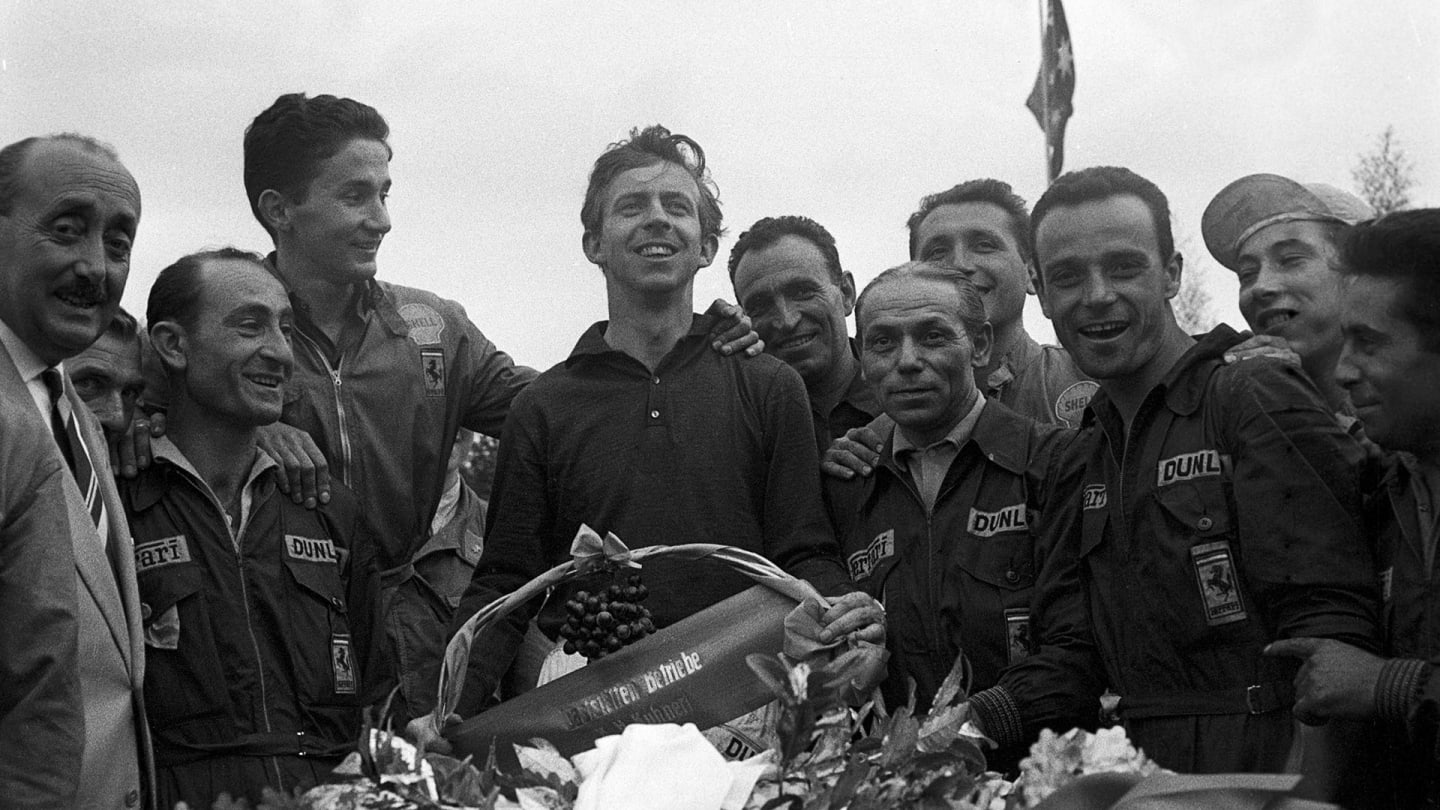
Surrounded by his Ferrari mechanics, Brooks takes the applause after winning the 1959 German Grand Prix
He’d had a major crash with BRM due to mechanical failure, and then at Le Mans just before that 1957 British GP another serious one in an Aston Martin, from which he was lucky to escape after becoming distracted fighting a mechanical problem. And he had made a promise to himself never to take unnecessary risks in a substandard car. Thus he felt duty bound in the 90 seconds he had to consider things to make a precautionary pit stop at the end of that opening lap at Sebring.
“Believe me, those must have been the most difficult minutes of my life!” he confessed. “If I stopped, the World Championship would be gone. On the other hand, if I didn’t I would have betrayed the solemn promise that I’d made to myself… Without being dramatic about it, I had got away with my life twice and therefore I made that promise to myself. And if I did, could I deserve anything else but pushing up the daisies?”
So he finished third when he might well have won, and lost the title to Jack Brabham.
An intellectual driver and a deep thinker who could see the larger picture, he was amazingly just 29 when he decided to retire. He’d just finished third for BRM at the 1961 US GP at Watkins Glen, he had a garage business to build up, and the time seemed right. He didn’t really like the 1.5-litre cars, with their excess of grip over horsepower, but his main reason was his growing family.
At the 1998 Goodwood Festival of Speed he was reunited with the 1957 Aintree-winning Vanwall, and none less than Mario Andretti pointed him out to Chris Mears, wife of Indianapolis legend Rick. “That,” Mario said, “is the best of the best of the best…”
The 1978 world champion always was a pretty good judge of other racers’ skill.
Tony Brooks – 1932-2022
Share
YOU MIGHT ALSO LIKE
TechnicalF1 Unlocked TECH WEEKLY: How McLaren are making the difference in F1’s intriguing 2025 aerodynamic race
News Alonso says Aston Martin ‘need to get used to’ not scoring in 2025 as he reflects on dramatic near-miss with protégé Bortoleto in Jeddah
News ‘I’m 2000% behind him’ – Vasseur backs Hamilton amid early Ferrari struggles as he insists ‘potential is there’
Podcast BEYOND THE GRID: McLaren chief Piers Thynne on the team’s championship transformation and life at Woking

